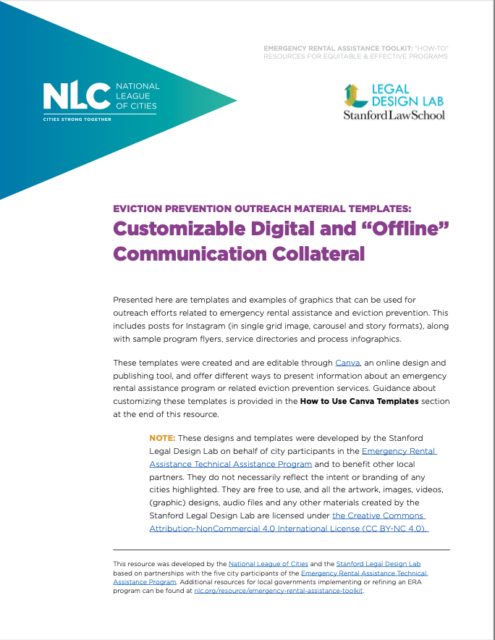Helping communities build ERA programs to improve housing stability in the long term
Cities nationwide have created emergency rental assistance (ERA) programs in response to the housing challenges resulting from the COVID-19 pandemic. Over the last several years, cities have seen the incredible potential these efforts have to improve housing stability and prevent evictions in the long term.
This series of worksheets and resources was developed for city leaders and program administrators interested in building or refining an equitable and effective ERA program in their communities. These resources offer a step-by-step approach to the important phases and critical elements of implementing local assistance for both tenants and landlords.
Key topics explored in this toolkit include:
- A functional checklist city leaders can use as they design and implement an ERA program from start to finish
- Best practices for communication, outreach and engagement with communities, including paper-based and digital approaches, strategies to tailor outreach to tenants who are eligible but are not accessing the ERA program, and an interactive website audit worksheet
- Tips for effectively partnering with relevant courts and a step-by-step guide for creating a landlord engagement strategy
- The importance of mapping the ERA process and eviction prevention services available through the local network of service providers and community-based organizations
- How cities can align their ERA programs with other eviction prevention efforts and coordinate implementation across internal and external systems
- Tips for visualizing, mapping and analyzing ERA program data to inform program design and implementation
Successful emergency rental assistance programs require extensive planning and coordination, with stakeholders often including city, county or state governments, court systems, community organizations and the tenants and landlords the program aims to serve. With access to these tools, city leaders and program administrators will be better equipped to design, implement and refine ERA programs that keep families housed, while improving housing stability in their communities in the long term.
Download the complete set of resources, Emergency Rental Assistance Toolkit: “How-to” Resources for Equitable & Effective Programs, or access the individual worksheets below.
These resources were developed by the National League of Cities and the Stanford Legal Design Lab based on partnerships with the five city participants of the Emergency Rental Assistance Technical Assistance Program.
This research was funded by The Annie E. Casey Foundation, Inc., and we thank them for their support; however, the findings and conclusions presented in this report are those of the author(s) alone and do not necessarily reflect the opinions of the Foundation.










